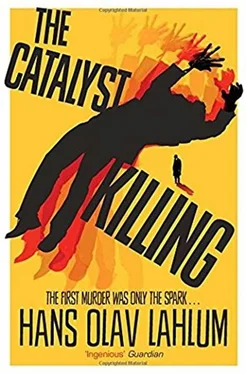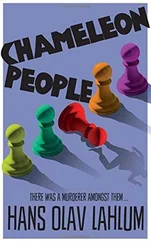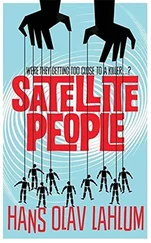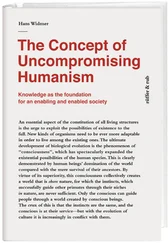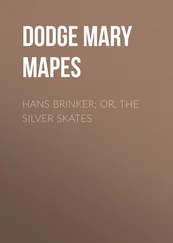I could not understand what she was driving at, but carefully noted down the questions on a piece of paper. Experience from earlier investigations had shown that Patricia’s apparently bizarre questions and whims could prove to be enormously important.
‘What do you make of the coincidence regarding the dates of Falko Reinhardt’s disappearance and Marie Morgenstierne’s murder?’ I asked. For me, this was the greatest mystery, along with how Falko Reinhardt had left the cabin.
Patricia rubbed her hands.
‘It is one of the most striking things about the case, and one of the most important questions that needs to be solved. I don’t believe in coincidence, and certainly not in supernatural connections. Given the situation, I am fairly sure that there is a direct and man-made link between these two strange events. But what sort of connection remains to be seen. I have too little information to know which of my many possible explanations is right. But I do think that Falko Reinhardt’s personality in part holds the key, as do the circumstances surrounding his disappearance.’
‘Does that mean that you may have an explanation as to how Falko Reinhardt disappeared from the cabin?’ I asked, hopefully.
Patricia gave a scornful snort.
‘I already have three possible solutions as to how he left the cabin. But if the answers to the questions you are going to ask are what I expect them to be, then I can possibly eliminate two of them. And in that case, we will be a good deal closer to solving the case. And by the way, all three possible explanations are based on the assumption that Falko Reinhardt disappeared off into the storm that night of his own volition, with or without help from anyone else in the cabin. This of course does not rule out the possibility that something serious happened to him, either outside the cabin or later. He may have gone out to meet someone who it then transpired wanted to kill him. However, I do believe that the chances that Falko Reinhardt is still alive out there somewhere are as great as the danger that he is dead.’
‘Well, where do you think he is, then?’
Patricia shook her head.
‘I have no idea where in the world Falko Reinhardt might be right now. His disappearance is in itself a locked-room mystery that then spills out into public space. Nor do I have any idea at the moment why he disappeared. But I am not concerned about that. Assuming that we are both still alive in a fortnight, we should have solved both the disappearance of Falko Reinhardt and the murder of his fiancée Marie Morgenstierne.’
This conclusion was immensely comforting, on the basis of previous experience – though I did suspect that Patricia trusted her own ability far more than mine. I did not pursue the matter. Instead, I asked what I should do the next day, apart from asking Miriam Filtvedt Bentsen the questions I had noted down.
The answer came faster than expected.
‘Start with that and Marie Morgenstierne’s flat. Then check with Falko’s parents, and anyone else who might know, whether his passport was left behind and if there is any indication that his money or other possessions have disappeared. Then speak to Falko’s supervisor at the university and see what you can find out about the names mentioned in his thesis. The lead of a possible Nazi network should be followed up. And then, most exciting of all, but also perhaps most demanding…’
I looked at her in anticipation. She swallowed her last two spoonfuls of ice cream before she continued.
‘… you should in fact do exactly as Anders Pettersen suggested, and request to see any information the police security service might have. My guess is you will not find the answer as to whether there was a mole in the group or not; but ask, all the same. And take a note of anything that they say might be of interest. I have a theory, and if it is right, it will also be a considerable step forward.’
‘Is the theory perhaps, like everyone else’s, that Miriam Filtvedt Bentsen was the mole?’ I felt my heart beat a little harder when I asked this question. To my great relief, Patricia snorted again.
‘Not at all. It is incredible how irrational and paranoid even intellectually gifted people can become in group situations. I do not trust this Miriam Filtvedt Bentsen for a second, but “absurd” is in fact a good description of that claim. There is nothing in the world to say that she had any sympathies with the police security service, even though she broke away from the group. The SPP is presumably watched just as closely. If, by any chance, she had been an agent with a mission to spy on the group, she would of course have remained seated, rather than leaving such a good post. If there was a mole in the group, it would seem more likely that it was one of the four who remained, not the one who left.’
I sent Patricia a look that was at once questioning and firm. She teased me a little, staring into the air thoughtfully without saying a word. I realized that she had a theory about the mole’s identity, but was not yet willing to reveal it. So I stood up, made it clear that I was getting ready to go, and remarked that it was going to be a long working day tomorrow.
Patricia stopped me halfway with her hand and one of her short and completely unexpected questions: ‘The question for today is, was Marie Morgenstierne wearing a watch when she died?’
I looked at her, taken aback, and wondered secretly if this was some kind of a joke. It was beyond me to understand what significance this detail might have. But Patricia’s face remained focused and almost insistent, without a shadow of a smile, so I answered with forced gravity.
‘Yes. She was, after all, a woman of means and was wearing a rather expensive watch on her left wrist. And it was still working after she had been run over by a train. But I simply have to ask, in return, what on earth you think the practical significance of that is?’
Now, however, Patricia smiled broadly.
‘I thought the practical significance of that would also be obvious. But I am more than happy to explain to you if necessary and you so wish. So far we have, naturally enough, been more interested in why Marie Morgenstierne ran for her life to the train. But what is also interesting is why she was walking so slowly in the first place. Even though she had a watch and knew the time, she was walking at such a leisurely pace towards the train that she would not catch it, and so would have to wait some time for the next one. And she must have known that, as she had taken the train home from meetings many times before. So, one theory that is worth noting is that Marie Morgenstierne wanted to give the impression of heading straight to the train, whereas in reality, she was going to meet someone else or do something else at Smestad yesterday evening.’
I had to admit that this was a theory worth noting. But I felt rather confused. So I excused myself, saying that I was tired after a long day of investigation, and asked with a fleeting smile whether we could meet again and discuss this further tomorrow. By then I would also, hopefully, have some more information to add.
Patricia replied with a bigger smile that she in fact had no other important arrangements tomorrow and that it would suit her very well if I was to drop by sometime after six, for example. Unless the staff had fallen asleep on the job or gone on strike, there was even a hope that I might get a simple meal after my hard day’s work. I thanked her and promised to be there before seven o’clock the following evening. Then I followed the maid out, still pensive, but far more optimistic than when I came in.
I had an extraordinary amount to think about when I went to bed, alone, in my flat in Hegdehaugen at around eleven o’clock on Thursday, 6 August 1970. The faces of the various people I had met in the course of the day flashed through my mind. Miriam Filtvedt Bentsen’s face stayed longest, even though she was the one I least suspected of being a murderer. But then I could not really imagine any of the people I had met so far as being Marie Morgenstierne’s extremely cold-blooded murderer. And if one of them was in fact behind it, I had no idea of who that might be.
Читать дальше
